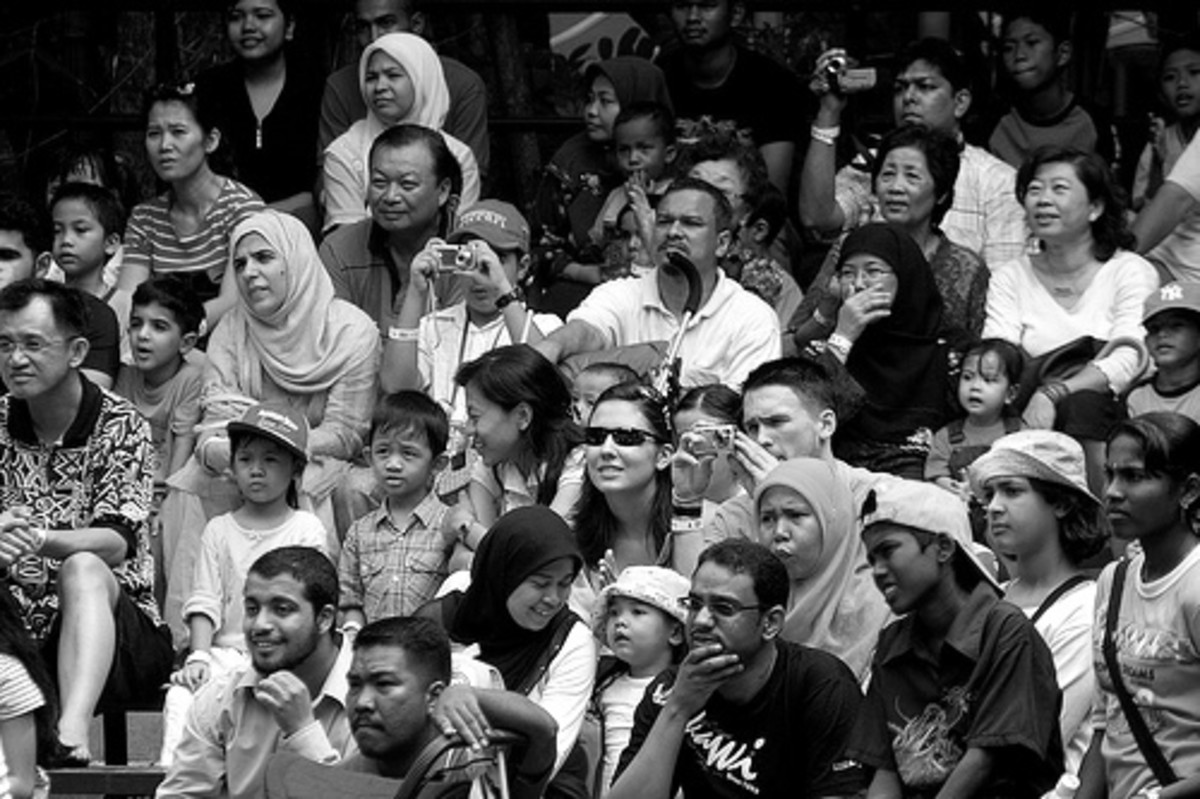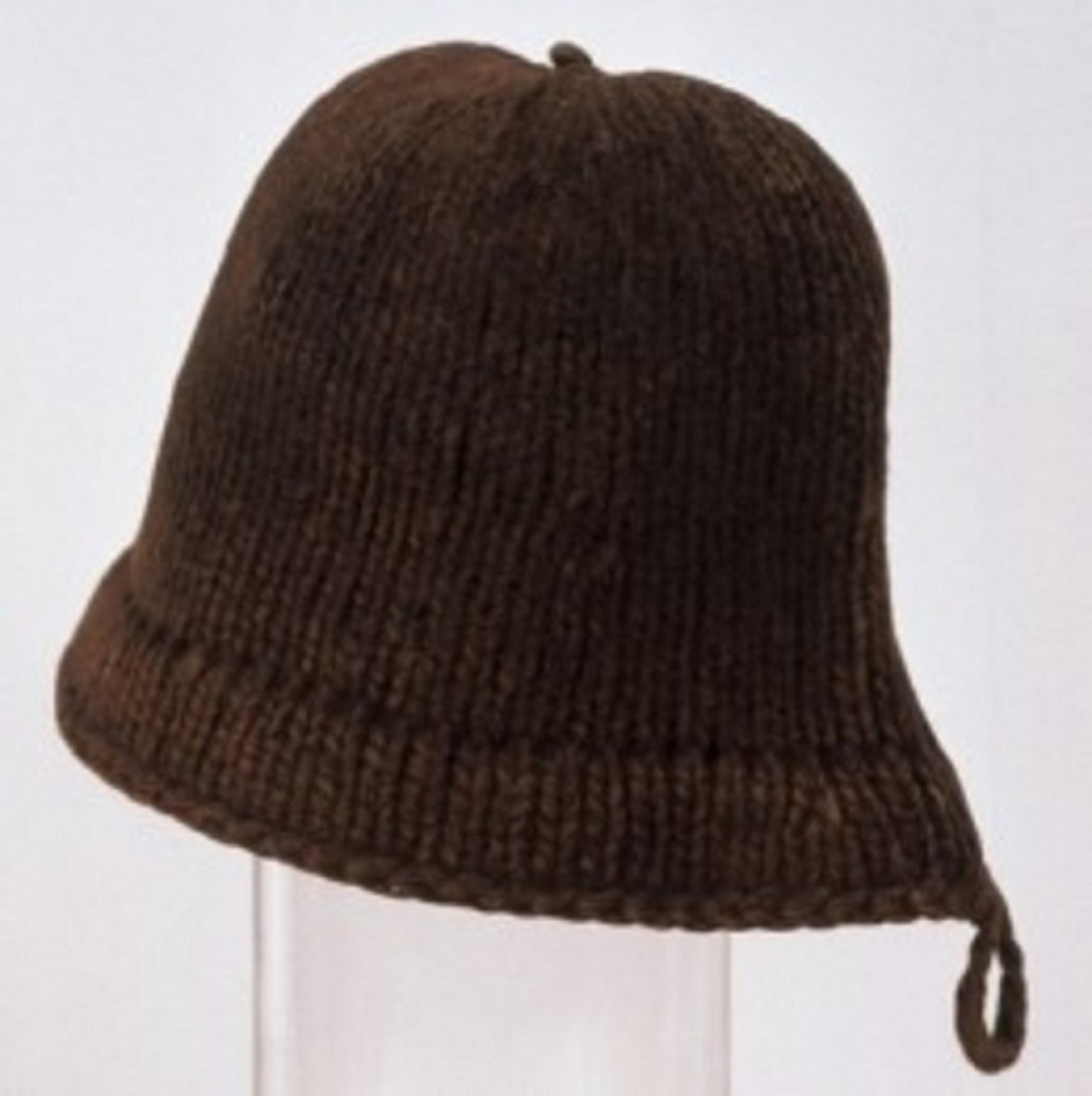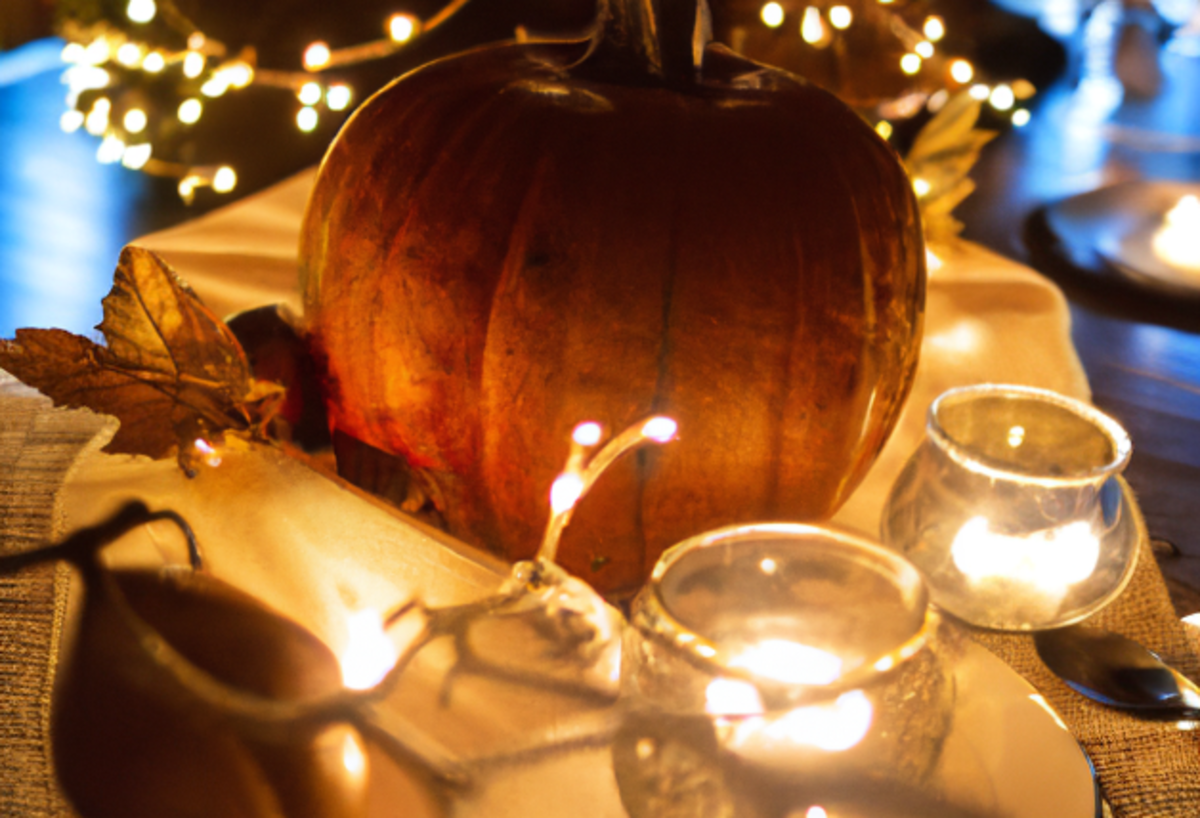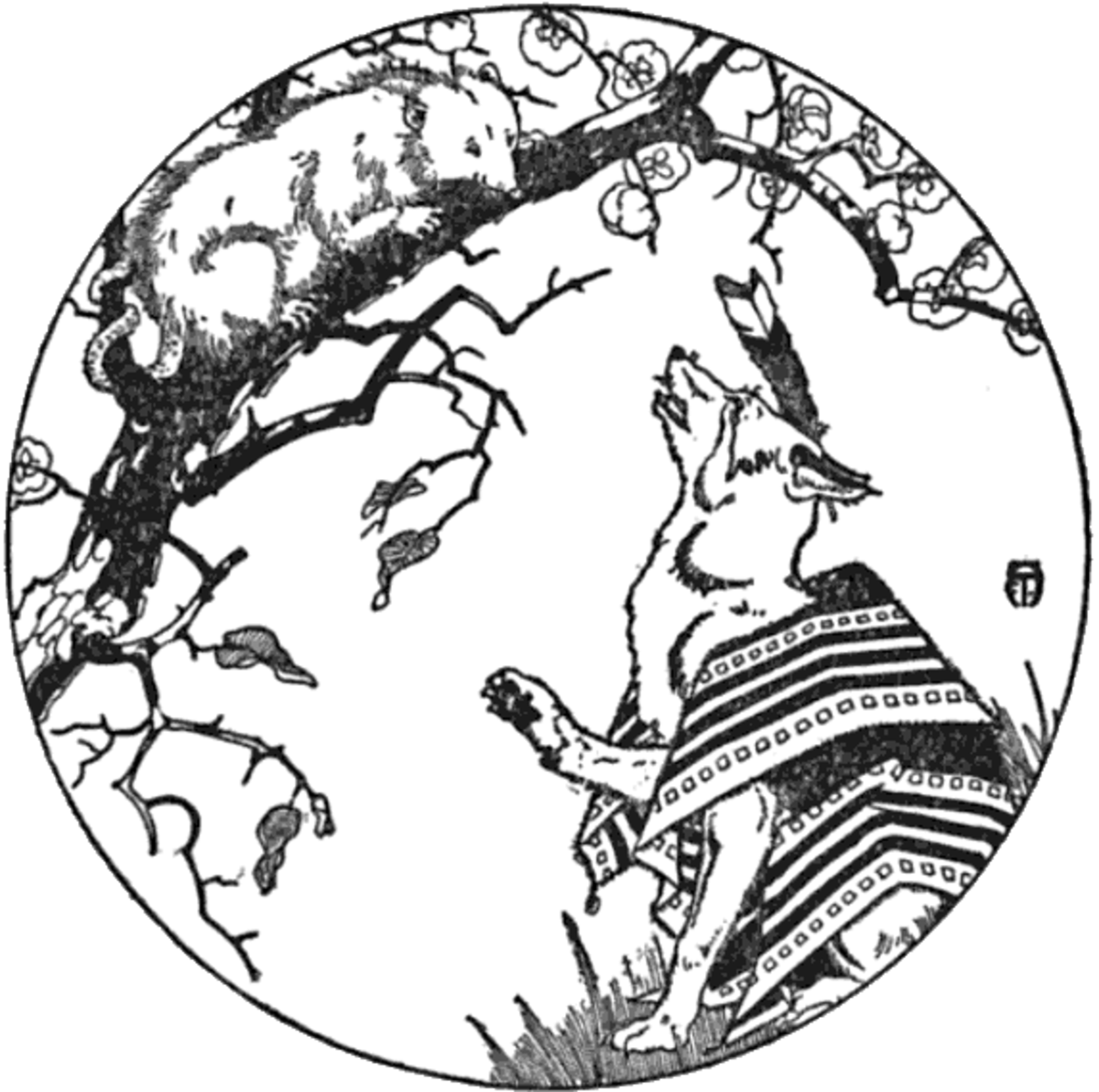What Is the Correct Story of the First Thanksgiving?
When Was the First Thanksgiving?
All over the USA, school children are dressing up like Pilgrims and Indians – or as nearly like them as their teachers can imagine – in order to re-enact what they have been told is the First Thanksgiving in America.
The story is familiar to many. Stores of food brought over from England had been depleted during the Pilgrims' first winter, and so the Wampanoag leader Massasoit donated food to them. A Patuxet named Squanto, who was living among the Wampanoag tribe, then taught the Pilgrims skills that could provide them with food in the new land where they had settled. And so after their first successful harvest, in 1621, the Pilgrims gathered together with the Wampanoags to celebrate a harvest festival, a tradition among the English as well as with the Wampanoag. That feast later became known as the First Thanksgiving in America.
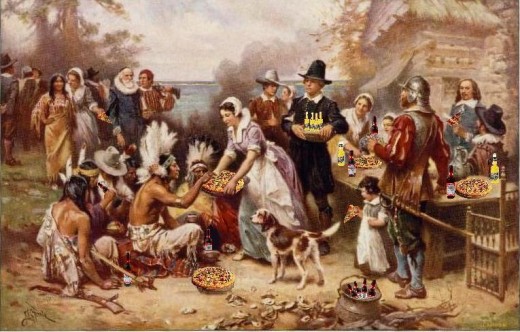
Church in Jamestown
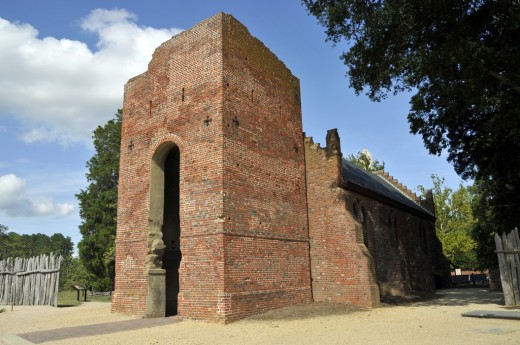
But was it actually the First Thanksgiving?
In the Virginia Colony (established in 1607) in 1619, a group of 38 settlers moved into an area known as Berkeley Hundred, about 20 miles upriver from the colony's first permanent settlement, Jamestown. One line in the group's charter declared that the anniversary of their arrival there should forever after be celebrated as a day of "thanksgiving to Almighty God." And so, when their ships landed on December 4, 1619, ship's Captain John Woodleaf conducted the service of thanks.
But the region was filled with armed hostilities at that time. The long-term residents understandably resisted the attempts by the English newcomers to encroach on their land. Conflicts in 1622 led to the death of nine of the Berkeley Hundred group as well as roughly one third of the English settlers in outlying areas of the colony. They withdrew to more secure locations, including Jamestown, abandoning Berkeley Hundred for the time being.
Thanksgiving and Harvest Festival
Although nowadays we tend to jumble the two types of celebrations, in the past there were noticeable, more marked differences between a harvest festival and a day of thanksgiving. Their names sum up the original meanings. A thanksgiving was primarily a religious celebration, a day or time for giving thanks (originally to a deity), possibly for some specific outcome such as safe passage, bountiful food, or victory, or – more generically – for blessings such as providence, civil and religious liberty, or (per George Washington's 1789 proclamation) "useful knowledge."
A harvest festival celebrated a bountiful harvest and so was likely to include a feast, possibly accompanied by a period of thanks. The image of the Pilgrims and the Wampanoags dining together, in what is the most celebrated and best known Pitch-In dinner on the continent of North America, lines up squarely with the tradition of a harvest festival. Written reports of those days of celebration often focus on the joy of the bounty and the communal dining and recreation among neighbors from differing traditions, more than on any religious observances of giving thanks.
Our modern Thanksgiving in the USA usually combines the two traditions: feasting as a celebration and setting aside some time for giving thanks, and the balance between the traditions varies widely according to individual, family, and community practices and beliefs.
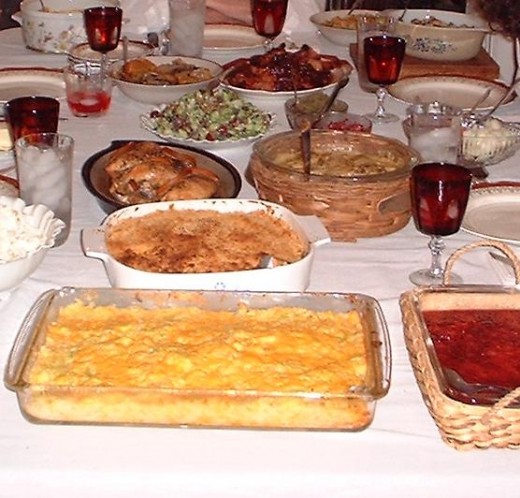
How do we decide which one to acknowledge?
As a student, a transplant to Virginia, I was indignant to hear an outcry in the local media, a plea to correct public awareness of the actual First Thanksgiving. I wrote an impassioned school essay detailing reasons why it made sense to me for the country to continue recognizing the Pilgrims' Thanksgiving as being "the first." Among other arguments, I cited the prevalence of harvest festivals and days of giving thanks in many cultures around the world before the American holiday had been remotely imagined.
But, as John Adams said, "facts are stubborn things," and it is a fact that 1619 was two years earlier than 1621. It is also a fact that settlers in the Berkeley Hundred held a day of thanks in 1619 and that the Pilgrims and Wampanoags celebrated a harvest festival in 1621, two years later.
And there are more facts to consider. With a few breaks in time, the harvest festival-thanksgiving celebrations continued relatively steadily in the New England area. The Pilgrims held another feast in 1623, even bigger than the previous one, since their move from communal to privatized farming helped to produce more bountiful crops. (At this same time the Berkeley settlers had already relocated to Jamestown.) Other New England celebrations followed not long afterwards, including Massachusetts Bay Colony in 1630 (and frequently after that); Connecticut, first in 1639 then regularly, starting about ten years later; and the colony of New Netherland in 1644.
Thus one could argue that the New England tradition, being of a longer and practically continuous duration, should still receive recognition as the First Thanksgiving.
But facts are stubborn things… and Texas has its own claims to hosting the First Thanksgiving: either a thanksgiving mass in 1541 (possibly on Ascension Day), when the Spanish explorer Coronado's party was able to feast on buffalo meat after long periods of fruitless searching and wandering; or the aristocrat-explorer Juan de Onate's day of giving thanks and feasting on fish and game after his party went without food and water for five days in 1597.
Either way, Texas wins by the calendar as hosting the First Thanksgiving, hands down
What Should We Teach in School?
Should schoolchildren dress up in serapes, ponchos, and sombreros, instead of feathered headbands and moccasins or black hats and knickers for boys, white caps and aprons for girls, and oversized buckles for everyone's shoes?
Well, why not? Why not tell them about all of these early celebrations of bounty after want? This is not a matter of revisionist history. Rather it's an attempt to provide a more accurate history than has been offered in the past. The dark side of opening up all that we know from history is that we will likely have to see things we would prefer to keep hidden.
The thanksgiving celebrations in Texas and Virginia were one-sided, unlike the Pilgrims' celebration. Coronado, after all, was seeking the Seven Cities of Cibola so that he could seize all of their gold for Spain; Juan de Onate's expedition concluded with claiming all rights to the land for the King of Spain; the settlers at Berkeley arrived during a period when English settlers were trying to wrest land from the native residents for the benefit of the Virginia Company of London.
And, sadly, even the Pilgrims' earliest encounters with the established population were not entirely benign. Their landing party had exchanged fire with a group of the Nauset people, and the cleared area they chose for settlement was easily appropriated because the previous residents had died or abandoned the land due to some plague, presumed to be smallpox introduced by a group of European settlers several years earlier.
But following those dire beginnings, the next years of interactions between Wampanoags and the religious refugees proved that cooperation between differing peoples was possible. The event that has been hailed erroneously as "The First Thanksgiving" in America is certainly emblematic of the kind of society we have traditionally honored: neighbors helping neighbors, working together, celebrating together.
What should we tell the children about the context of those first thanksgivings? Specifics depend on the age and understanding of the child. Early elementary kids may not need to hear anything other than that the European immigrants did sometimes treat the native inhabitants badly. They can hear that the celebration in Plymouth Colony is a good example of the way people who might not get along can show compassion to one another, can cooperate, and can set aside their differences. Older elementary pupils may be ready to hear more details about the conflicts. In all cases and at all ages, it can be good to remind students – actually, all of us – that people don't always get along at first, but that with work it is possible to overcome past differences, even if it takes a long time to reach that goal, and that it is usually a worthy goal to have.
One method of honoring different traditions of our past is by learning more about other cultures. At Thanksgiving, a great way to do that is through the food we eat. This year, try some new recipes that represent cultures from the familiar and the unfamiliar early Thanksgiving celebrations. Add some of these to your dinner menu, or enjoy them in a special Thanksgiving Day breakfast or supper. Full recipes are available in the article Commemorate the First Thanksgivings with Representative Recipes.
For More Information
You might like to learn more about the First Thanksgiving celebration in Virginia by visiting Berkeley Plantation. For details of their holiday schedule and fees, check out: www.berkeleyplantation.com
For more information about the Texas First Thanksgivings, see:
http://www.texasescapes.com/ClayCoppedge/Thanksgiving-as-a-Texas-Thing.htm
Breakfast:
Boston Brown Bread
Virginia ham biscuits
Huevos Rancheros
Pemmican Dessert Bars
Supper:
Texas coleslaw
Indian Fry Bread
Brunswick stew
Succotash

